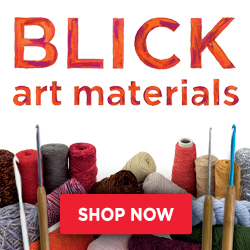I’ve been painting 40k and Warmachine models for a few friends. And for kicks, I’ve been trying my hand (and eye) at painting non-metallic metal (NMM). For the less well versed, NMM is the method for painting metallic surfaces without using metallic-containing paints.
In this article, I share my experience trying to learn how to paint with the NMM technique. I’m always trying new things to see what my limits are in the hobby.
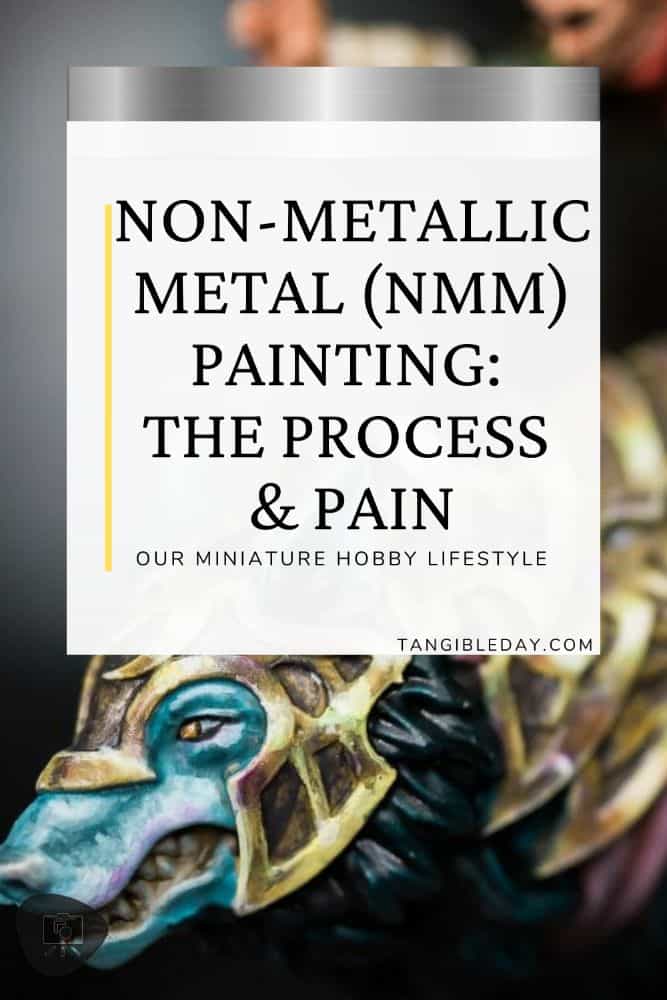
This is why I wanted to write this piece: to share with you some thoughts about how you might start seeing how NMM works, even when the science that explains reflective material appearance isn’t something we grasp right away.
To Paint with NMM, You MUSt See differently
After playing around with the NMM technique, I realized that while painting objects that appear reflective, like a metallic surface, you have to stop trying to mimic what you “remember” it should look like. Instead, you need to “pretend” what that object should be.
I’ll say it again: Forget what your brain remembers as real. It’s wrong. Try to understand what your miniature surface should look like if was actually reflective.
On the surface, what I’m advising you do when you’re trying to learn how to paint with the NMM style is to do the paradox. Embrace what is counter-intuitive. Our brains have some odd ways of interpreting things that we see, and it’s not always useful as an artist.
RELATED: 8 MUST-KNOW PAINT BLENDING TECHNIQUES FOR EVERY PAINTER
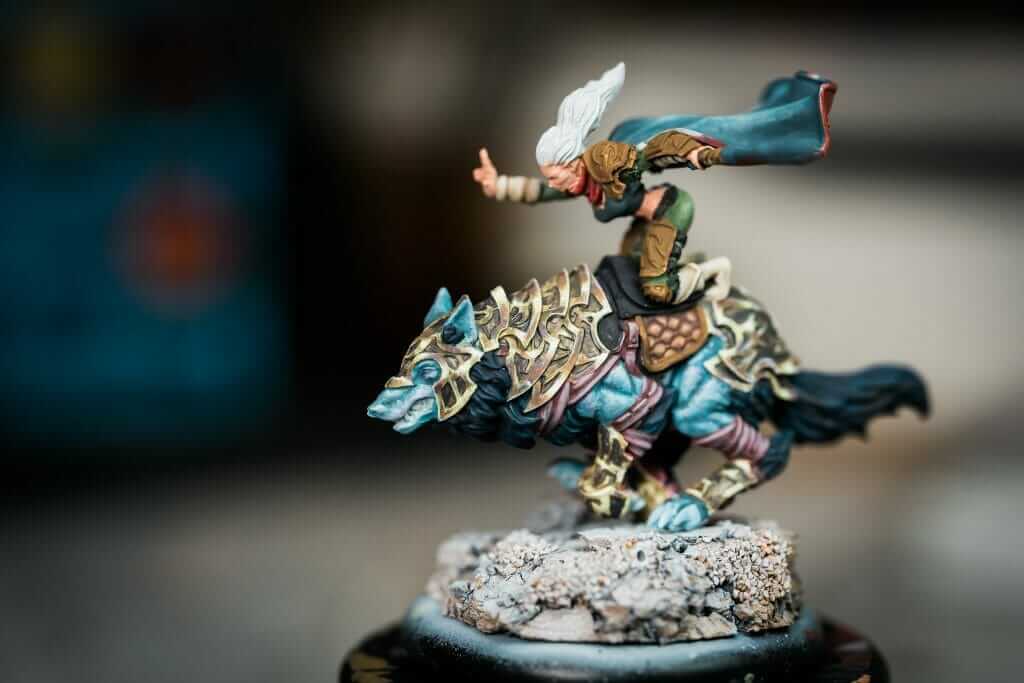
Start painting with Knowledge, But finish the job with your instinct
The NMM technique requires some understanding of the basics of how light behaves. This involves your engagement in the world around you, observing things and paying close attention to details.
Here are a few principles and patterns I noticed in the world around me. These are observations that have helped me approach NMM with new “eyes.”
Be observant
In my understanding from observing objects around me, e.g., a chrome fork or knife, a shiny surface appears to “collect” light in small areas along a surface. In contrast to a matte object, such as cloth, light does not diffuse, it gathers strongly in straight hard edges.
Some call this high contrast, or sharp, edge contrast. The angles and the way light/shadows collect is difficult to describe, because I don’t fully understand the math behind it. To paint NMM, I’ve been using my intuition to understand light and dark and with only a reference object on my desk (a metal fork).
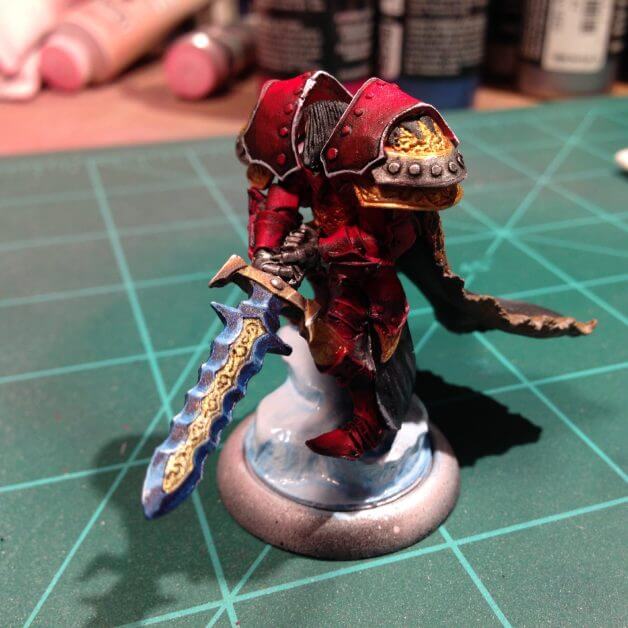
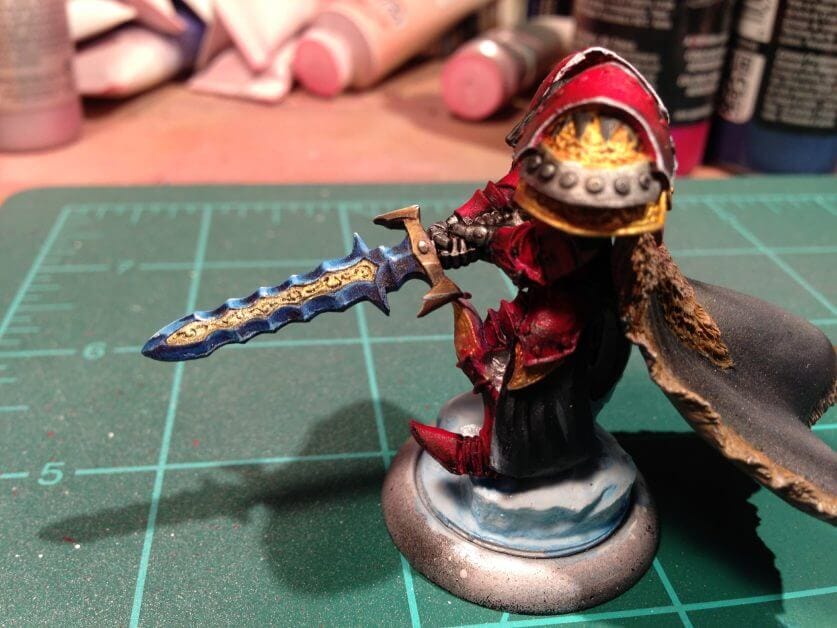

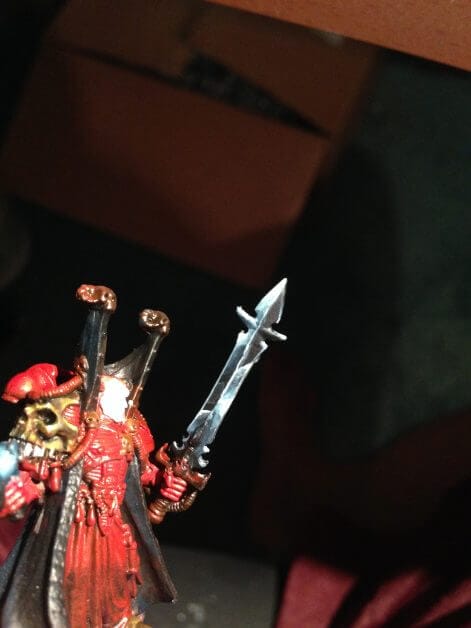
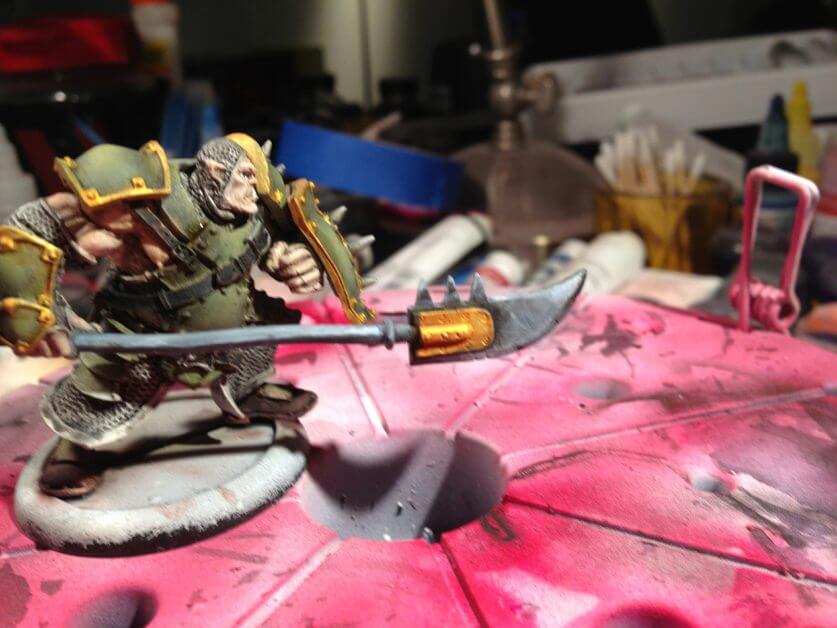
So, to sum of up the principles of light reflection, a key part of being able to paint NMM, here’s how I see and feel what is happening :
- Light acts like a liquid when it hits a surface. It splashes and spreads out.
- Glossy, reflective surfaces collect light into tight places, as though the light slides into those areas (except it goes upwards toward the peaks, rather than the valleys as an actual liquid might).
- Matte, non-reflective surfaces spread out the splashing light, diffusing it across a larger area, dimming it.
- When you’re painting, try and verbalize what is happening, and you may discover some patterns in how light behaves in your mind. This is so important when it comes to developing your artistic eye for the process of painting NMM.
My Encouragement for your NMM painting journey
After years of painting miniatures, there’s also a common theme in how everyone paints. That is, nearly everyone, including myself, start out by trying to copy someone else’s work. Then, as they suffer through the iterative process of improving on their miniature painting work, we get to the point where we feel comfortable with what we’re doing.
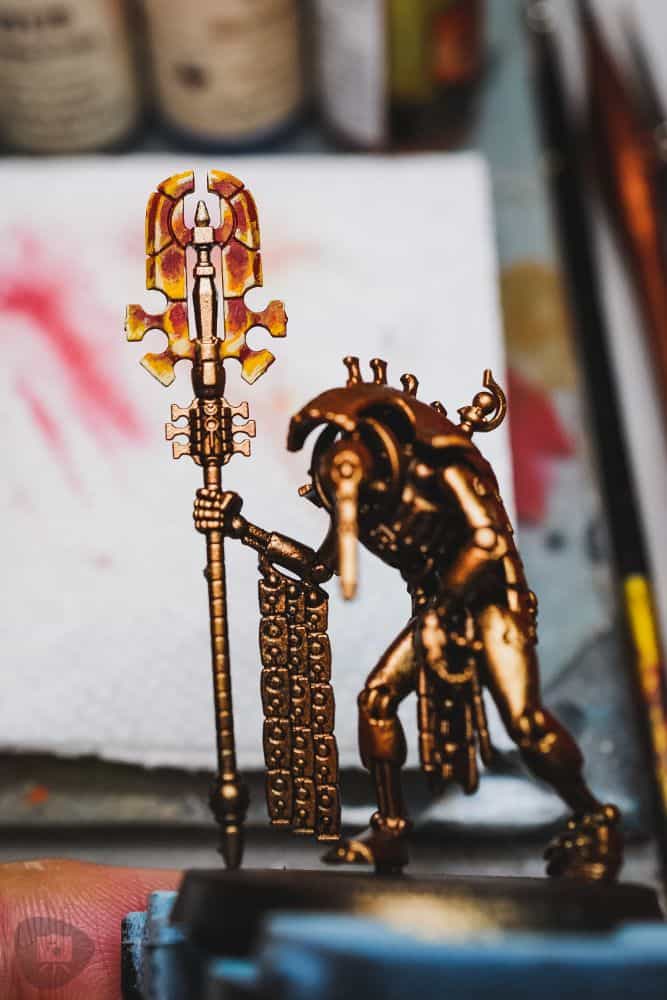
We learn what works for us, and what doesn’t. While there’s always room for improvement, I’m confident in saying that you will reach a point where you’re “content.” And, you should reach this point of satisfaction in your miniature painting process.
The same is true with NMM styled paint jobs. You’ll struggle, like I have, learning how to screw up enough times to finally reach a point when ta-da(!) it works.

Yes, as I said above, I still don’t fully grasp when I achieve a satisfactory NMM paint job, but I do. And, there’s been good feedback from my local community as well as others that help reinforce that I’m on the right track.
Essentially, I see two ways to paint NMM
A few more thoughts, as I bring this stream of consciousness bit together. I think for anyone out there trying this process, you may find yourself falling into one of two camps when it comes to painting NMM.
First, you may try the sky-earth approach, which is likened to trying to paint a super shiny chrome object that reflects the colors and light that surrounds it. This is WAY hard. I don’t even think I’m going to try this for a while.
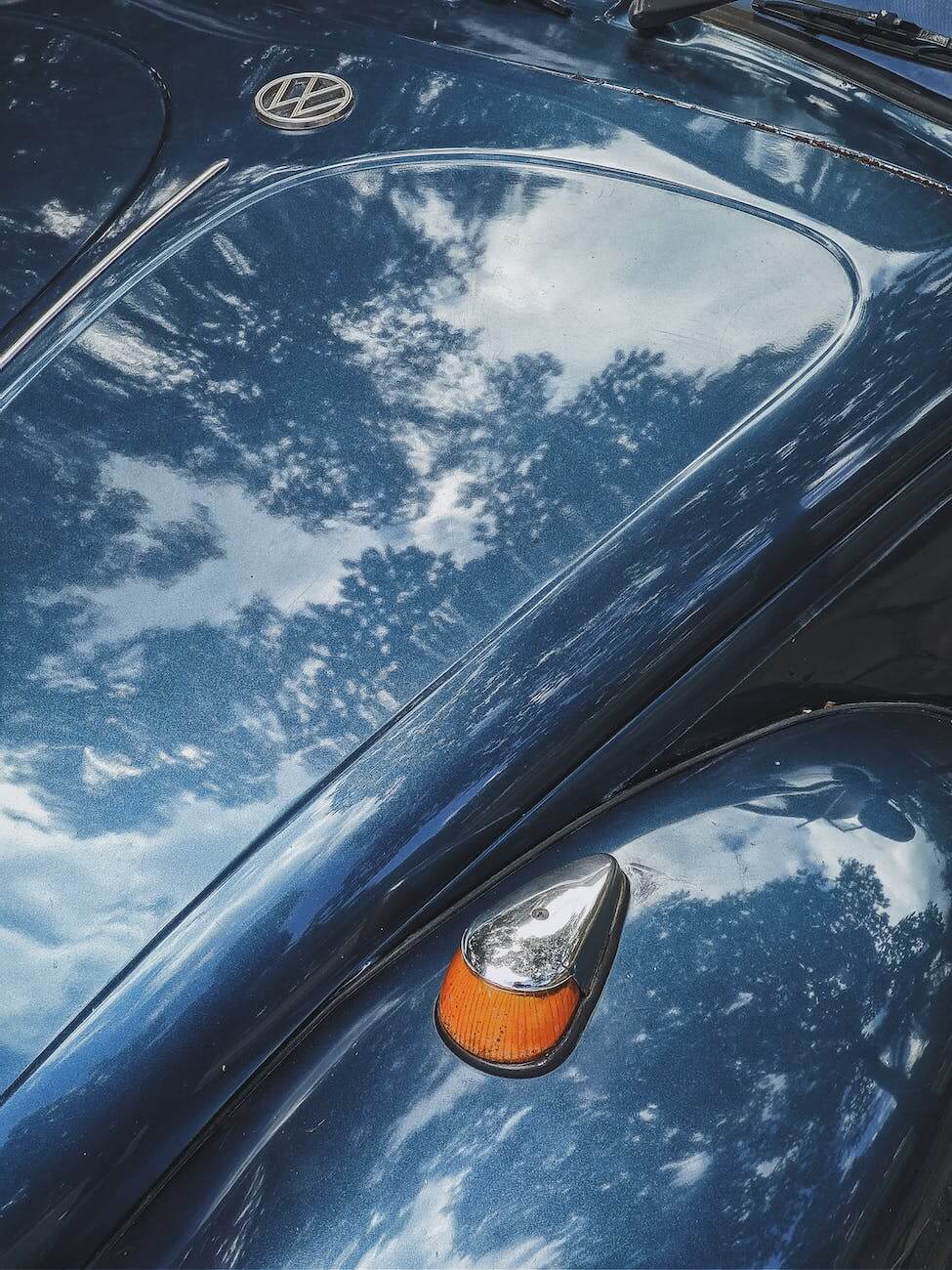
Second, is a method for painting NMM that I prefer to use for any project that I think it’ll look good on. And while it is not super realistic, it is very compelling and I like how it turns on when I use it.
This is an NMM method that I describe as replicating the appearance of a metal object that gathers light around it and pushes it back out. Sure, this sounds poetic, metaphorical, but I feel that light and shadows work like a resource….you only have so much of it that can be “placed” onto an object. Where you place it on the object determines what the object will look like.
Learn how Light behaves
It’s not physics. Forget science. This is art.
Remember, what I wrote above about “light behaving as a liquid?” This is that kind of thinking in action.
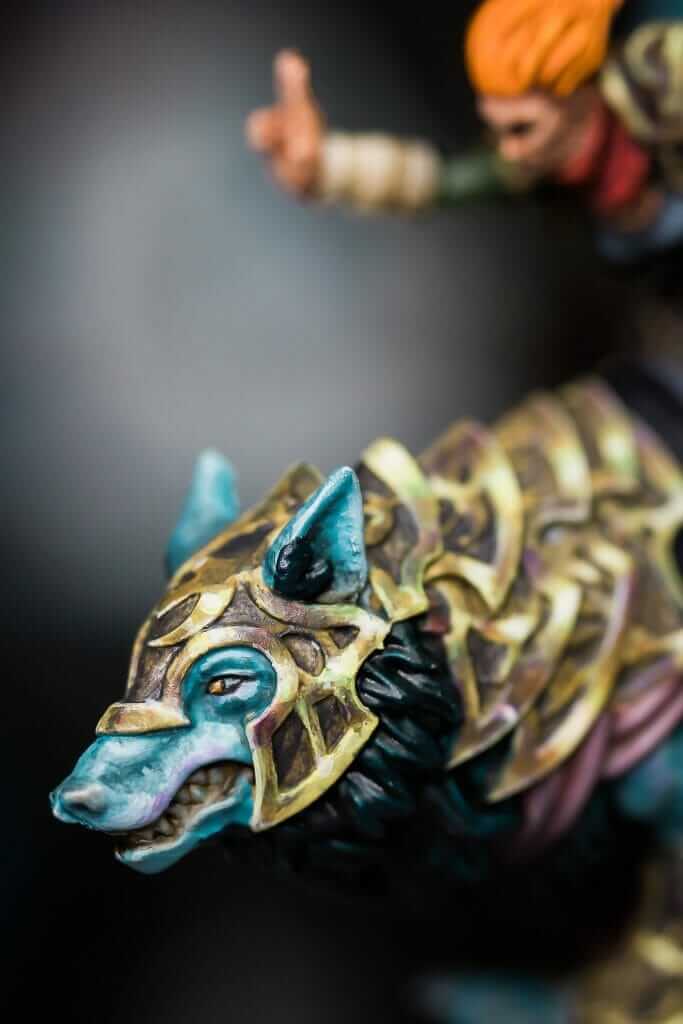
For example, on a bright shiny object, you will place all your light resources in concentrated areas, and likewise with shadows.
On a more matte metallic surface, like aluminum, the light and shadows are spread out across the object’s surface. In both the bright shiny object and the matte object, the “amount” of light and shadow is the same, but the location of those “resources” is distributed differently.
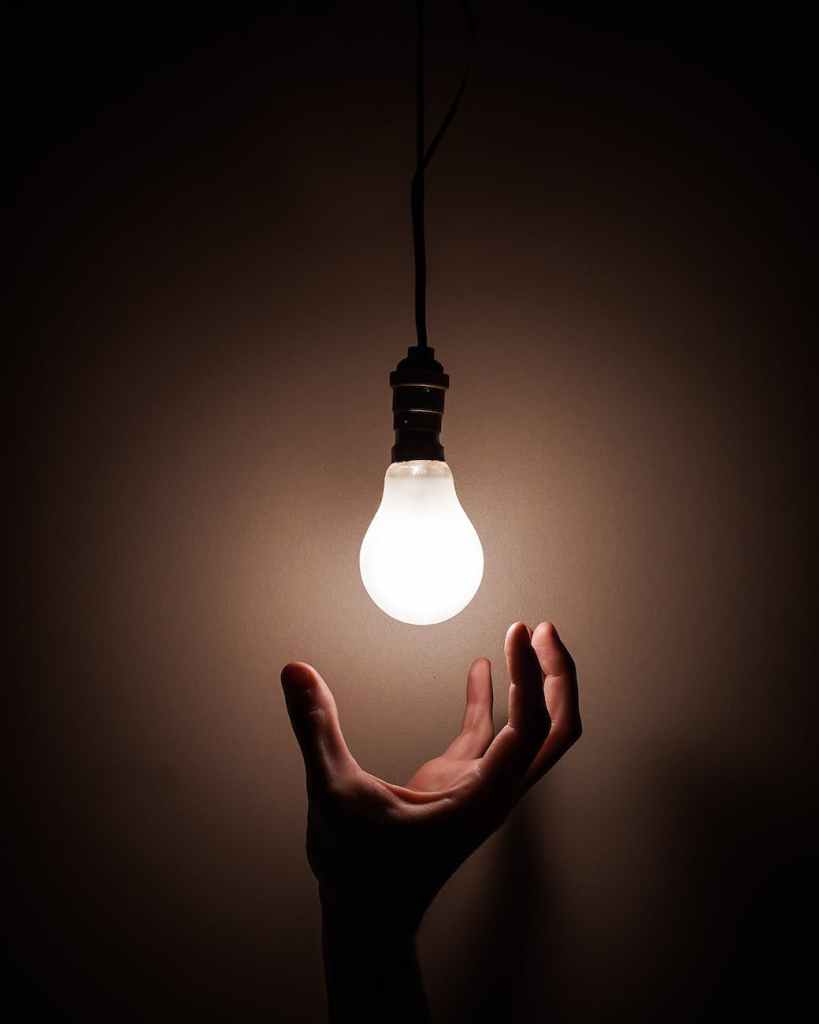
Anyway, I’m still in practice mode and playing/experimenting with blending and color distribution. I will continue to have more images and thoughts behind how I approach painting NMM in the future.
Stay tuned….
In the meanwhile, check out the gallery!
Final Thoughts
I hope you enjoyed my thoughts in the process of learning how to paint NMM. Like you, I want to acquire the skills to achieve artistic outcomes that I feel good about as quickly as possible.
But, if you’re wondering if there are short cuts to this particular technique, I’m afraid not. It’s going to be a back and forth process until one day you pause and say to yourself “not bad!” and keep going.
And, going I am.
Are you trying to improve your ability to see and paint NMM on your models? I want to know more, too! Please leave a comment below.


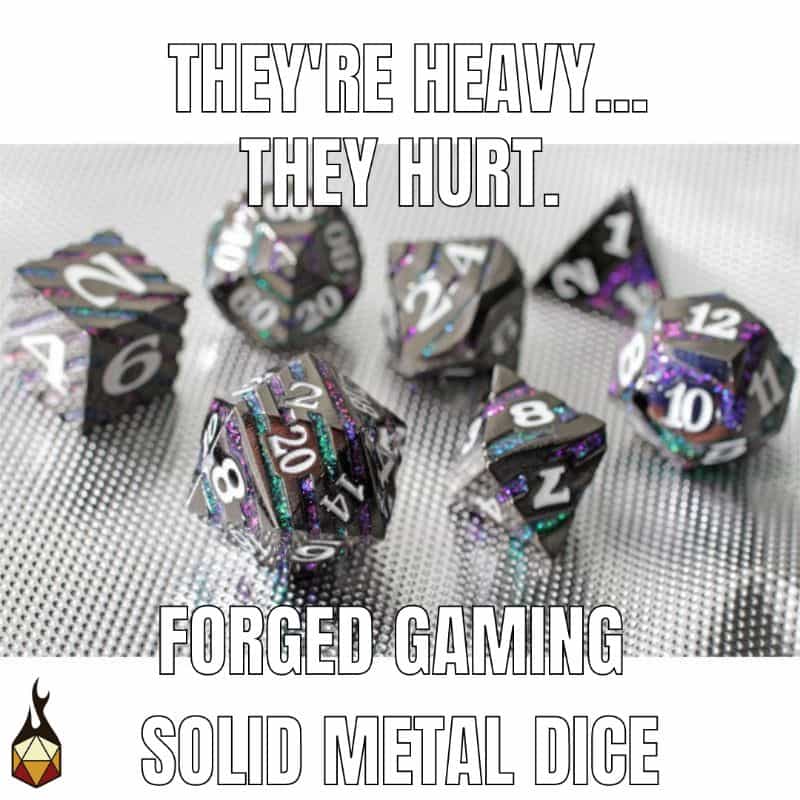

Tangible Day on YouTube (Miniatures and More!)

